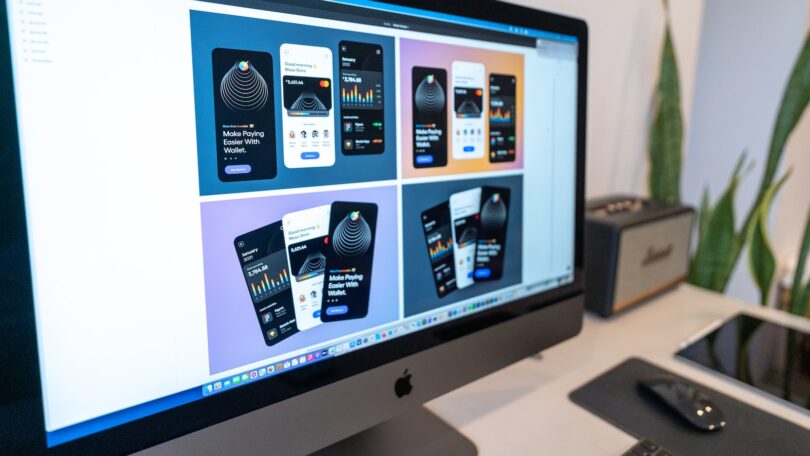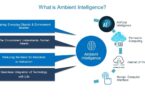We all have a near-constant connection to technology, and it’s only getting stronger. With every beep, every chirp, and every click, the digital world envelops us. But how can we design technology to better serve our needs? The answer lies in mindful design, a movement championing the power of digital psychology. By understanding users’ emotional needs and mental habits, mindful design is helping to create user experiences that are more meaningful — and more successful. This article will explore how mindful design is profoundly impacting user experience today.
1. Exploring the Benefits of Mindful Design
Mindful design is a concept that considers the end user’s psychological influences on the digital experience. It harnesses the power of digital psychology — the study of user behavior and responses to digital media — to create experiences that not only capture the attention of the user but also stay top of mind. By making the user feel in control of their journey, mindful design can provide more engaging and personalised experiences.
1. Understanding User Behavior
By understanding user behavior, mindful design can be tailored to create a more compelling and enjoyable user experience. Through evaluating user interactions with digital platforms, designers can uncover patterns in user behavior and preferences to create more customised designs. Also, this understanding can provide insights into what features users expect, how they can be best presented, and what information to communicate in order to meet their needs.
2. Aligned Design & Content
Mindful design ensures that the design and content are in alignment. This means that designers should consider how the content can be presented in a visually appealing and meaningful way. This includes balancing whitespace with visuals and text, following a set of approved templates, and utilizing visual elements to create cohesion throughout the user interface. By creating a harmonious blend of design and content, users can quickly recognize the value of the user journey and be drawn in.
3. Accessibility
Mindful design helps ensure accessibility for users with disabilities. This means that the design and content can be easily interacted with regardless of disability. Examples of this include high contrast colors, clear labeling, content that can be read by screen readers, clear translations, and keyboard-only navigation. All of these features can help ensure that digital content is accessible to everyone.
4. Mindful UX Writing
Mindful UX writing is an important part of mindful design. It involves creating concise and straightforward prose that communicates value and intent without compromising clarity. UX writers should consider the audience, the product goals, the content hierarchy, and the message when crafting text for the user. This type of writing can help guide and inform the user through the digital experience, providing them with a clear understanding of what information is being presented to them in a meaningful way.
Conclusion
Mindful design is about understanding how the user interacts with digital platforms in order to create powerful experiences that remain top of mind for the user. By considering user behavior, aligning design and content, and creating accessible designs with mindful UX writing, designers can create engaging experiences that capture users’ attention and keep them engaged throughout their journey.
2. A Deeper Look into Digital Psychology and its Role in UX
Digital psychology is an incredibly powerful tool when it comes to understanding how people use digital products, and how to craft effective user experiences. In this section, we’ll take a closer look at how digital psychology can be used to create robust, enjoyable user experience (UX) designs.
1. Understanding User Behaviour
The single most important component of user experience design in the digital world is understanding how users interact with our products. By analysing user behaviour, we can develop an awareness of the expectations, needs, and wants of our users. Digital psychology provides us with an invaluable insight into how users interact with a product. With this insight, we can tailor our designs to meet the needs of our users and create interfaces that are intuitive and efficient.
2. Crafting Intuitive Interfaces
One of the key elements of UX design is crafting an intuitive, user-friendly interface. Through digital psychology, we can understand how users navigate through a digital product and use this insight to create a streamlined user interface that conforms to the expectations of our users. By employing a combination of visual cues, image design, colour theory, user feedback, and digital psychology, we can design effective interfaces that guide users through our products.
3. Creating Engaging Experiences
At its core, UX design is all about creating an enjoyable experience for the user. Digital psychology allows us to explore the needs and wants of our users and create an engaging experience that meets these needs. By leveraging behavioural cues, we can craft unique experiences based on user habits and preferences. By doing this, we can ensure that users are given an enjoyable and rewarding experience that exceeds their expectations.
4. Delivering Lasting Impacts
The ultimate aim of UX design is to improve user satisfaction and engagement with our products. By leveraging digital psychology, we can understand how users engage with our products, enhance the user experience, and deliver lasting impacts. Through careful analysis and user feedback, we can create experiences that meet the needs of our users and have long-term impacts.
Conclusion
Digital psychology is an invaluable tool for creating powerful UX designs that engage and satisfy users. From understanding user behaviour to crafting intuitive interfaces and delivering lasting impacts, digital psychology allows us to develop an understanding of our users and create experiences that meet their needs. By harnessing the power of digital psychology, we can create user experiences that are enjoyable and rewarding.
3. Unpacking the Power of Mindful Design
When it comes to the power of mindful design, it can often feel like unlocking a Pandora’s box. With so many elements to consider, including digital psychology, user experience, and emotional design, it can be difficult to piece all the pieces together.
But while running off in all directions might be tempting, a mindful approach is essential if we want to create user experience and digital psychology that is truly effective. So let’s look into this further by examining some of the key elements in mindful design.
1. Understand Your User
- Map out user journeys alongside journey goals
- Gather insights and leverage analytics
- Clearly define the target audience
2. Dig Deeper Into Emotions
- Understand the emotional mental states of users
- Tap into the power of visual storytelling
- Gain an understanding of subtle emotions
3. Test, Test, Test
- Put prototypes and design concepts into action
- Collect feedback and iterate designs
- Utilize digital tools such as heatmaps
Mindful design brings together the puzzle pieces of digital psychology, user experience, and emotional design, and unlocks the power of truly captivating experiences. While the elements explored are just scratching the surface of what mindful design can achieve, they provide invaluable starting points for creating experiences that truly make a difference.
4. Applying Mindful Design for Enhanced User Experiences
In the world of digital marketing, the power of mindful design is often overlooked. With user experience and customer satisfaction at the heart of many businesses, it is now more important than ever to consider how our digital products can be designed in a way that truly benefits the user. By integrating mindful design principles into our UX strategies, we can truly unlock the powerful potential of digital psychology and create user experiences that are enjoyable and seamless for our customers.
- Using Color Psychology: Certain colors can evoke certain emotions and reactions, an element which you can use to great effect in your UX design. Consider incorporating particular colors and color combinations into your designs to evoke the desired feeling in your target audience.
- Placing Subtle Cues: Utilizing subtle cues in your design is an important aspect of mindful design. On a website page, you may opt to leave a certain element out, or to place a particular element in an easily visible location, as these cues can be particularly useful in influencing visitor behavior.
- Creating Visual Flows: The way elements are arranged in a website or app’s screen can have a great influence on visitors and customers. Using a mindful approach to your designs, such as focusing on visual hierarchies, flow and consistency, can help to bring out the best in your user experience.
- Utilize Animations: Animations can help to draw attention and encourage engagement with your digital product. By leveraging animations properly and in the right context, you can offer a compelling UX that engages and delights visitors.
- Optimizing for Context: Last but not least, analyzing user data and refining your UX design based on user behavior is key to mindful design. By monitoring and analyzing user behaviors, such as time spent engaging, clicks, and conversions, you can more accurately tune your designs to meet the needs of your target audience.
By utilizing mindful design strategies, like the ones mentioned above, you can create UX experiences that are optimized for each customer segment and that truly take into account the needs of the user. In an age where customer experience and satisfaction is the key to success for many businesses, mindful design is essential for crafting unique digital experiences which work.
5. Strategies to Leverage Digital Psychology in UX Design
Everybody proven that UI and UX design is important for any product. It doesn’t matter what kind of product – a software, platform, website or app – users are looking for remarkable and memorable experiences. Beyond the interfaces and aesthetics, these products need to engage and amaze people to capture their attention and nurture loyalty. In that sense, digital psychology can play an important role in designing user experiences. The following are five key strategies to unleash the power of digital psychology in UX design.
- Understand user behaviour: To create seamless user experiences, UX designers must gain an insight into the needs, motivations, and shopping behaviour of their users. Market research and user surveys are good starting points but more can be done to understand how people interact with digital products. For example, user testing and analytics provide critical insights to uncover what works and what doesn’t for your users.
- Think from a psychological perspective: With this knowledge, UX designers can design strategic user interfaces that take into account psychological factors. It is essential to determine how a user will interact with a product, so that the product meets their expectations. Designers should focus on the user experience and overlooks the emphasise on aesthetics. Simple interfaces that provide easy navigation, smart use of colour, language, and typography reduce cognitive load on the user and enhance user engagement in a positive way.
- Explore the persuasive power of design: Technology can be used to nudge users into a certain path and behavior. Digital products built around persuasive design can influence users to make a purchase or take a certain action. Designers can leverage psychological tactics such as cognitive biases, social proof, and gamification to increase engagement, conversion rates, and user flow.
- Create personalised user experiences: Powerful mobile technologies enable brands to create personalised user experiences based on user data and preferences. Designers can take advantage of this and create experiences that are tailored to the needs and expectations of individual users. Through personalised UX design, product designers can create value and nurture relationships with their customers.
- Take advantage of emotional design: Emotions play a major role in the user experience, as they drive and motivate users in what they do. Brands can take advantage of this by using emotional design to create experiences that trigger joy, curiosity, and excitement in their users. Integrating emotional design elements can help create experiences that connect users to the product and foster loyalty.
These five strategies can help UX designers leverage digital psychology to create meaningful and powerful user experiences that engage and captivate users. By understanding human behaviour, thinking from a psychological perspective, tapping into the persuasive power of design, creating personalised experiences, and taking advantage of emotional design, designers can create experiences that draw users in and keep them coming back for more.
6. Mindful Design Tips to Derive Optimum Results
Designing a user experience isn’t just about creating visually pleasing layouts – it’s about understanding the psychology behind it. Digital psychology is all about understanding the user and how their actions, reactions, and behaviors affect their overall experience. It’s the key to creating a successful UX. Here are 6 mindful design tips to maximize the power of digital psychology in UX:
- Focus on clarity and consistency: The most effective user interfaces use consistent navigation, layout, and visual elements throughout the experience. This helps users understand the structure of the product or service and navigate through it intuitively.
- Keep simplicity in mind: The best designs are simple, clean, and focused on the user’s needs. Don’t add complexity to the interface unless it’s absolutely essential. Instead, focus on using the simplest way to communicate the user’s action.
- Customize the interface for the user: By creating personalized experiences, you can show users that you understand their needs and have designed the product or service specifically for them. This builds trust and encourages long-term engagement.
- Design an experience that balances control and freedom: Give users some degree of control over their experience by allowing them to customize elements like colors, fonts, and layouts. However, avoid overwhelming them with too many choices.
- Include relevant visuals: Visuals can be utilized to improve user understanding and make tasks easier to complete. For example, including visuals that explain a process or provide context can make the experience more intuitive.
- Test the experience: To ensure that the design meets user goals and expectations, conduct usability tests with actual users. This will help identify areas for improvement and ensure that the experience is optimized for user success.
By implementing these mindful design tips, you can create an optimized digital experience that will please even the pickiest users. With the right balance of clarity, simplicity, personalization, and visuals, you can make a big impact on user engagement and satisfaction with your product or service. As a UX designer, the power of digital psychology is in your hands. Harness it and create experiences that evoke emotion, delight, and engage users. By embedding mindful design into UX workflows, you can create moments that truly connect with users, and fill them with lasting memories.








